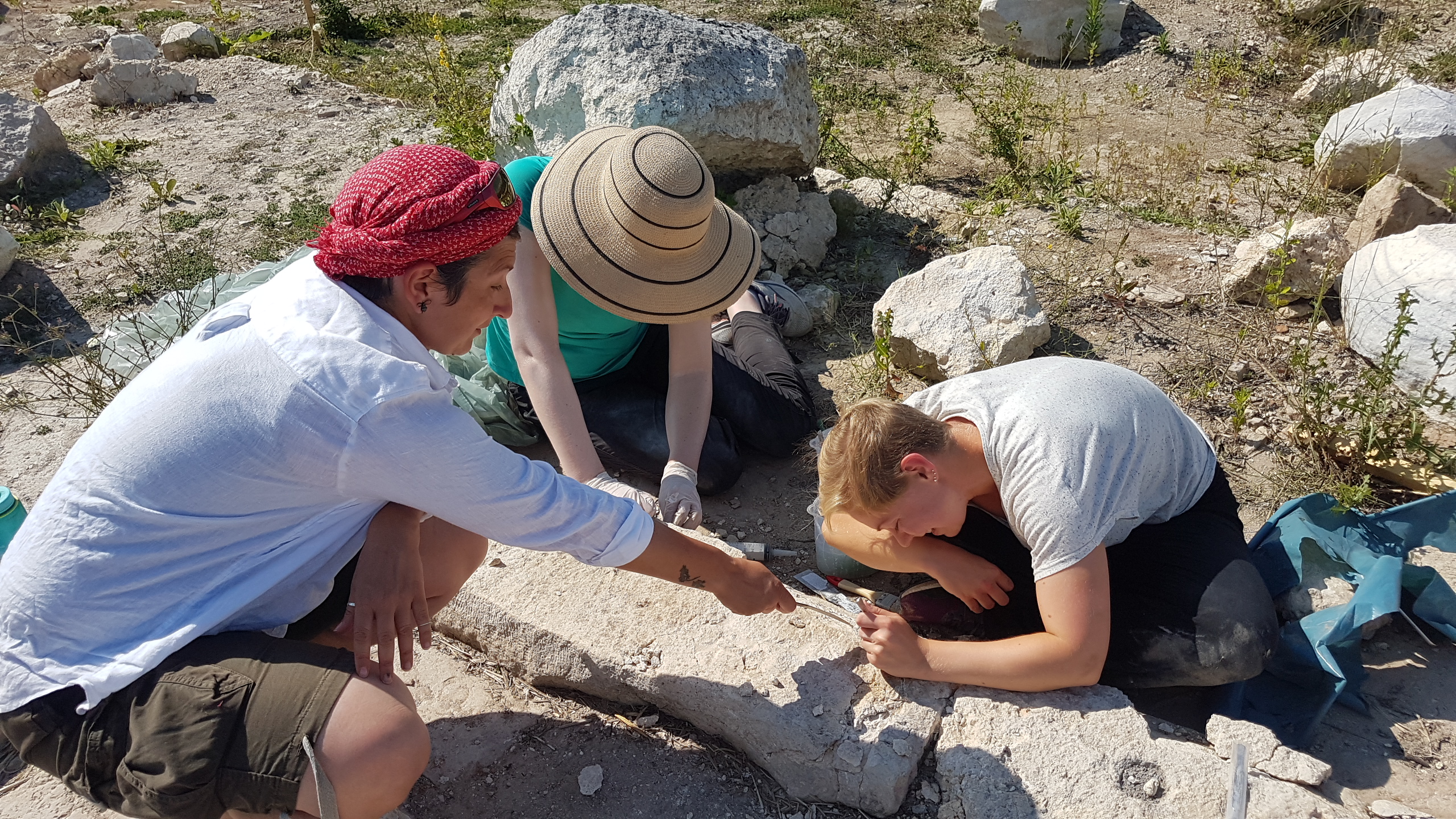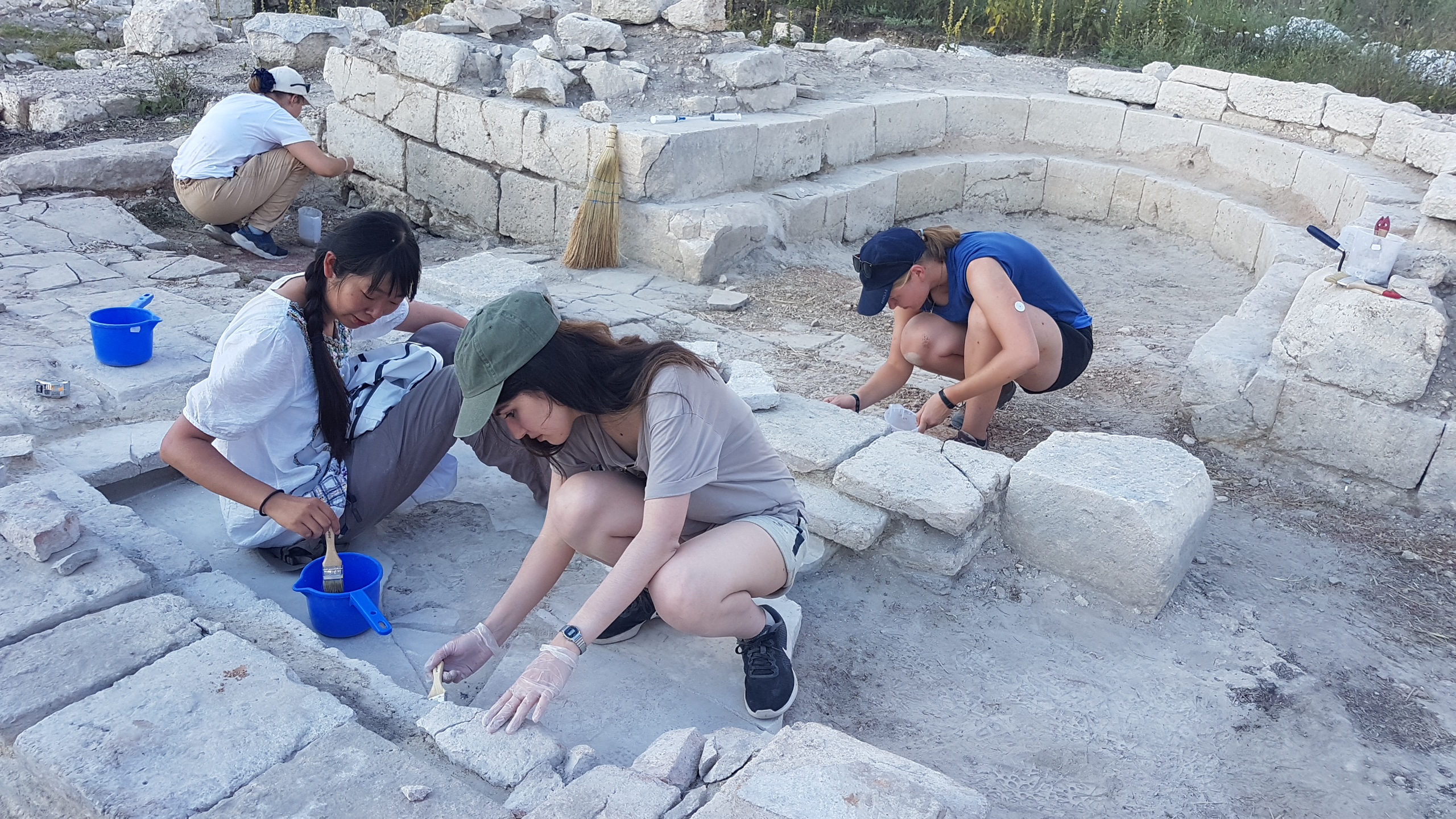VFU STUDENTS PARTICIPATE IN THE RESTORATION OF THE ANCIENT PALMATIS FORTRESS
02 august 2019
Students of the master’s degree programme in Preservation of Cultural Heritage at Varna Free University "Chernorizets Hrabar" participated in a partnership project "Mapping and Conservation of an Early Christian Basilica, Palmatis fortress, Dobrich region," which took place at the end of July in the village of Onogur, Dobrich region.
Volunteers from the USA, Russia, China, India, Germany, Spain and Norway also took part in the project of European Heritage Volunteers and the Regional Museum of History in Dobrich, in cooperation with the Horishte Association. Under the leadership of Boyan Totev from the Regional Museum in Dobrich and the restorers Dr. Krasimira Frangova (The Royal Danish Academy of Fine Arts Schools of Architecture, Design and Conservation, Denmark) and Tome Filov (Stobi National Institute, Northern Macedonia), they passed through theoretical preparation, and investigated and documented the state of the base of the altar barrier, the canopy base, and the synthron base of the Early Christian Basilica in Palmatis, prepared and implemented a strategy for field conservation of the archeological structures.

Palmatis is an ancient Roman city, whose fortified area covers an area of 225,000 square meters. Within the boundaries of the Roman Empire, the city is part of the province of Moesia II and is located on the important road that connects the ancient cities of Durostorum (present-day Silistra) and Marcianopolis (present-day Devnya). In the sixth century, Palmatis became a bishopric centre and one of the most important cities in Moesia II.
The remains of the Early Christian Basilica were first identified in 2013 through a geophysical survey. In 2016, during rescue archeological excavations, the altar space was revealed. In 2018, the three-nave naos and the three-parted narthex of the basilica were studied. One of the most remarkable discoveries made during the archaeological studies is the synthron, which was probably unusually high - about 2 m. The first three of its nine steps have been preserved.

At a meeting in November 2018 in Germany (European Heritage Volunteers Partner Projects Coordinators' Meeting 2018), the project, developed by the Horishte Association, was presented and approved for implementation by the European Heritage Volunteers.
European Heritage Volunteers is a leader in the field of European cultural heritage volunteering.The volunteer initiatives have proven their contribution to the preservation of archaeological structures, to the increased interest of local people and to the promotion of immovable cultural property.
With the implementation of the project, the Horishte Association has initiated for Bulgaria the already established European practice of voluntary initiatives in the field of protection and promotion of cultural heritage.
The project was implemented thanks to the additional financial and material support of:
- Tervel Municipality;
- Chamber of Engineers in Investment Design – Regional Branch Varna;
- Planex EOOD;
- BEZMER Agricultural Cooperative;
- DobroZhantsi Association.
- Roefix EOOD;
- Remmers Bulgaria.

